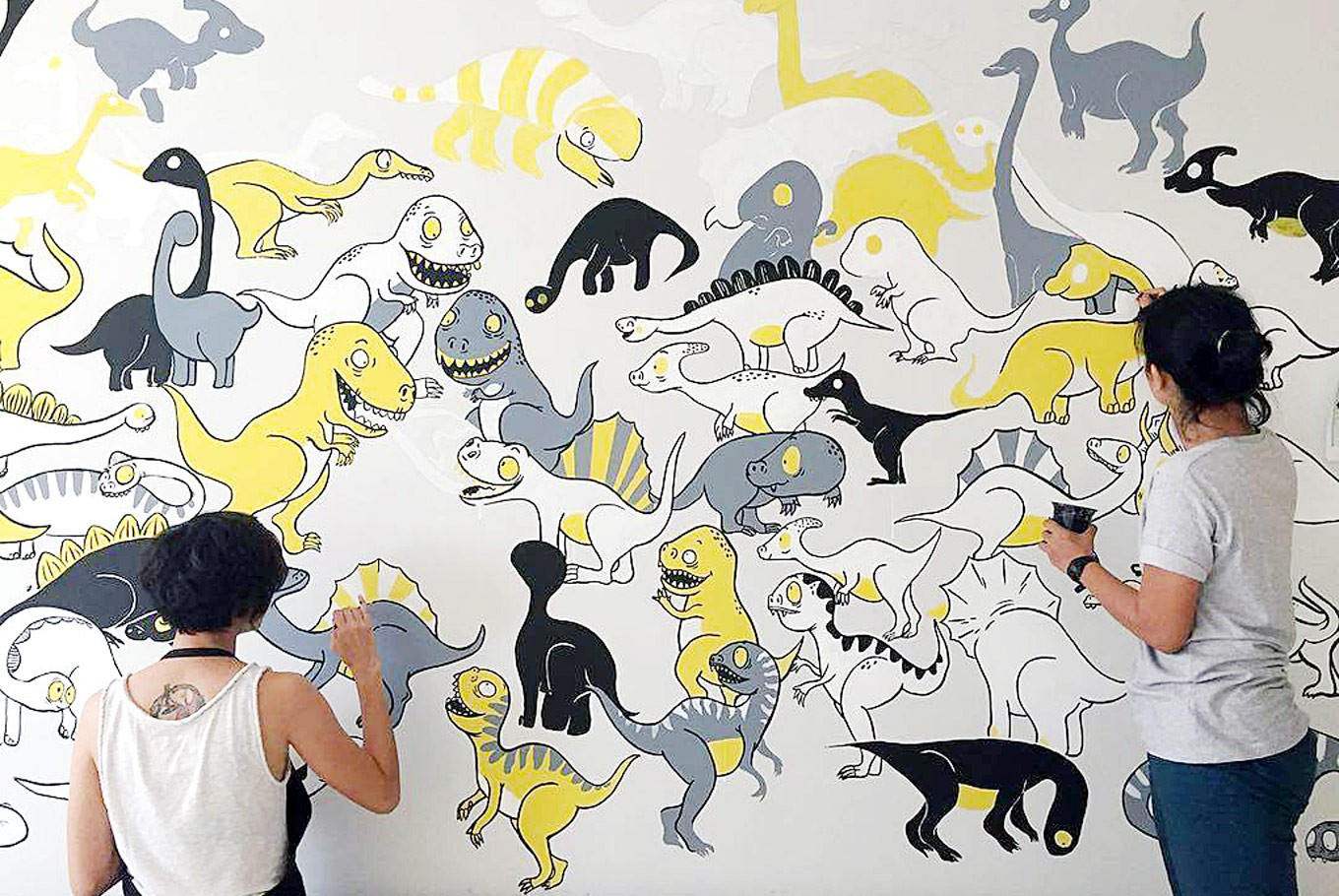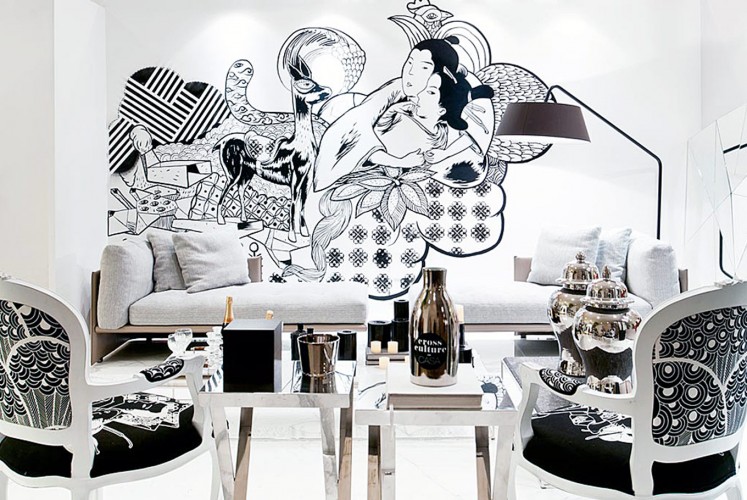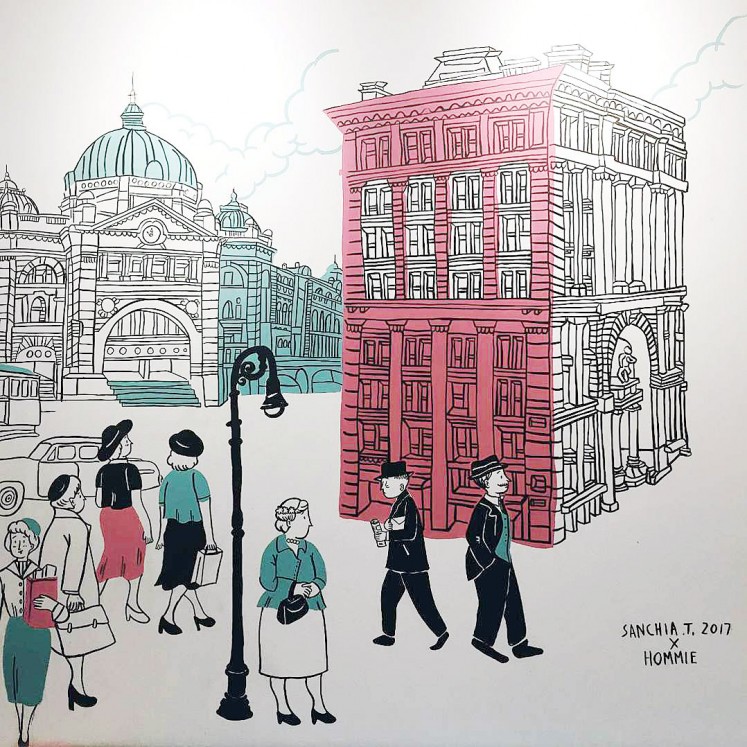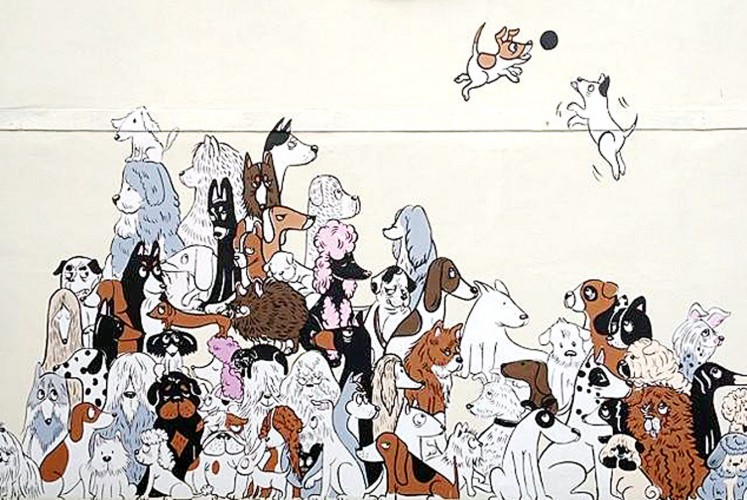Popular Reads
Top Results
Can't find what you're looking for?
View all search resultsPopular Reads
Top Results
Can't find what you're looking for?
View all search resultsEnlivening spaces with murals
Change text size
Gift Premium Articles
to Anyone
D
o you have empty space on a wall and want to spruce it up, but are overwhelmed by the many design options out there? A mural might be just what you need.
Murals are known as paintings on street walls that some may consider vandalism, but they are a type of artwork that has been around since prehistoric times.
In the caves of Maros, South Sulawesi, for instance, hand paintings decorate the cave walls along with pictures of animals. “That’s also a mural,” explained interior designer Eko Priharseno.
“Murals are ancient art and were a way to communicate or even pray to something. That’s the function of ancient murals. But of course the art transforms along with time and we can see many varieties of murals these days.”
He said murals were artwork applied directly to a wall or another stable surface. They are found in public spaces such as cafes, restaurants and, of course, the streets. People have also started adding murals to their homes.
Black-and-white: Interior designer Eko Priharseno’s mural for a Bravacasa exhibition. (Aedi Interior/File)In Indonesia, he said, the art of mural painting was progressing, with each artist developing their own technique and unique characteristics. Some use acrylic, charcoal or chalk.
“There has been a rising trend of incorporating murals into the design of a home in Indonesia over the last five to six years,” Eko said after speaking at the Creative Talk: Art and Living discussion at the Art Jakarta 2017 in Jakarta.
Murals stand out for as they complement many elements of a room.
“[For home design] a mural stands out when it can tell rich stories of the house, the culture of the people who live there and the history. It should strike a conversation and become the anchor focus of the room,” said mural artist Sanchia Hamidjaja.
Another unique characteristic of murals is that they can be placed anywhere — not only limited to a living room but also to bedroom, dining room, child’s room and even bathroom.
There are so many types of murals — from simple drawings to 3D perspectives — depending on one’s preference. “It can be abstract, pattern, graphic, illustrative, it can tell a story or it doesn’t even need a story,” said Sanchia, who recently designed a mural at the Go-Jek office.
Out and about: A colorful mural by Sanchia Hamidjaja. (Sanchia Hamidjaja/File)Eko said a mural could be based on a room’s function. For instance, if you want to add a mural to a child’s room, you can add their favorite characters and add messages from the pictures to encourage the children to be more active.
“I tend to see murals as something decorative, something that become part of the house,” said the principal designer for AEDI Interior.
He said before painting a wall, the message conveyed by the mural needed to be considered.
“A successful mural is the one that can unite and complement the room,” said Sanchia. “It should not collide with other elements. Moreover, it will create another perspective for the room.”
Dog house: A colorful mural by Sanchia Hamidjaja and team for a dog grooming center. (Sanchia Hamidjaja/File)***
The writer is an intern at The Jakarta Post














